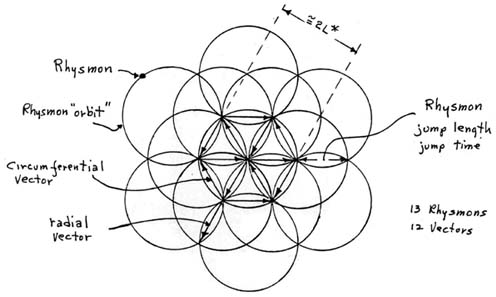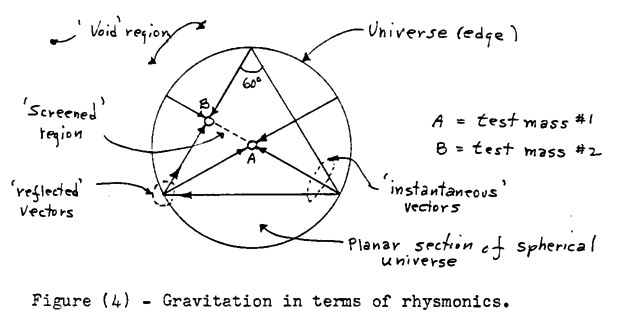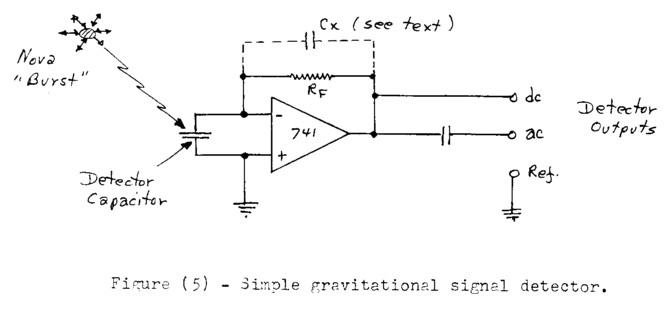The Nature of the Microwave Background Radiation
Abstract
The concepts of rhysmonic cosmology are used to show the gravitational nature of the so-called microwave radiation. Simple experiments, which use a shielded electronic gravitational signal generator, are shown to confirm the rhysmonic interpretation for these effects. Therefore, this radiation is not the ‘relic’ radiation as presented in the ‘Big Bang’ cosmological theories of the origin of the universe.
Introduction
That the universe is permeated with a background radiation of electromagnetic waves ranging from the very short wavelengths of gamma rays (order of 10-14 cm) to the extremely long wavelengths of some noted micropulsations (orders of many millions of cm) has been recognized for many years. The sources of this radiation are the many physical processes found in the stars and galaxies, as well as the intervening regions of space. In general, ionization processes are found in stars which are stable, while other processes, which generate a wide range of electromagnetic wave radiations, are found in unstable stars and galaxies. Three generally recognized processes are synchrotron radiation, Bremsstrahlung radiation, and Compton scattering. Other processes also contribute to this general background. Of particular interest is the so-called microwave background radiation which falls in the range of about 500 MHz to about 500 GHz.
Microwave Background Radiation
This radiation was discovered serendipitiously in 1965 by Penzias and Wilson in the course of making radio-astronomical measurements using a microwave horn antenna at about a 7 cm wavelength (1). During the course of these tests, a residual radiation which was isotropic in nature, remained unaccounted for. This radiation was eventually attributed to being a ‘relic’ radiation of the recently proposed Big Bang theory of the origin of our universe. This relic radiation had been predicted by Gamow in 1948 and was further elaborated upon by Dicke and others in 1964. That this radiation is of a black-body nature and highly isotropic has been determined in many tests since that time. Today the radiation has been sown to pretty much follow the curve for a black-body at temperature of about 2.7° K. However, some questions still remain concerning the isotropy of this radiation. Experimental observations, although some were crude in a way, indicated a large measure of isotropy, also indicated some possible variations, some repeatable and some perhaps more random in nature. The author, in developing a ‘new’ theory of the nature of the universe, has come up with an alternate explanation for this radiation which is gravitational in nature. This theory, called rhysmonic cosmology (2), is briefly presented here in essential form in order to provide a basis for the author’s interpretation of this observed microwave background radiation.
Rhysmonic Theory
The new cosmology developed by the author is based upon what amounts to as an updated version of the aether theory. A substratum particle which is termed a rhysmon, after another early Greek term for the original atom, forms a matrix structure which can be recognized as the ‘vacuum’. Thus the vacuum is the very fabric of the universe. The substratum, or the new aether of the vacuum, is also a storehouse of potential energy provided by the extremely small objects called the rhysmons. The rhysmons are contained within independent ‘orbits’ and have energies equal to one Planck Constant quantum of action, h. Individual rhysmons intertwine with other rhysmons in a matric structure as is shown in planar form in Figure 1. In this planar view, it is seen that interweaving results in short directed vectors which now have energies of h/2 pi, or h, quantum of action. From this construction, one can define some additional parameters based upon Planck’s Constant and his system of Natural Units (3). These are given in Appendix I for reference. The complete matrix structure is seen in Figure 2 in three-dimensional form. This basic cell is reminiscent of R. Buckminster Fuller’s vector equilibrium (4) in that all directed energy vectors in the pure rhysmoid, i.e., the undisturbed vacuum, cancel their energies and thus display no effects or phenomena which can be observable. Observable effects, such as particles and fields, require perturbations or disturbances in this ‘perfect mechanical’ matrix structure. The basic cell structures interlock with other cell structures in forming the vacuum of the universe. This interlocking is depicted for an extended planer view in Figure 3. The maximum use of available energy content, however, would require that the three-dimensional build-up of the universe be in spherical form, i.e., the universe must be a sphere.
Figure 1 --- Complete planar view of balanced forces of vectors in basic cell of matrix structure.

Figure 2 --- Three dimensional view of vector equilibrium of basic cell of matrix structure.

Figure 3 --- Extended planar view of basic cell of matrix structure.

Depicted in Figure 3 are the directed rhysmonic vectors as given in some single instant of time, having the duration of Planck Time, T*, or about 5.4 x 10-44 sec. In the next instant of time, T* later, all vectors reverse direction, as new rhysmons ‘orbit’ into these same positions. In time T* later again, the vectors are restored to the original directions, but the original rhysmon does not return to its original position until a time period of 6T* has passed. Thus the universe is like a movie, in which each frame of the cinema of existence lasts for only Planck Time, T*. As seen in Figure 3, directed rhysmonic vectors join head-to-tail to form an ‘instantaneous’ vector which can span the universe. These instantaneous vectors are fundamental to the rhysmonic explanation of the nature of gravitation and is further developed in Reference 5.
Rhysmonic Gravitation
Gravitation in terms of rhysmonic theory will be only briefly summarized here. In essence, the instantaneous rhysmonic vectors ‘exist’ universe wide for the interval of Planck Time, T*, and thus are effectively ‘action at a distance’ in this time period. Gravitation in rhysmonic theory is the result of the ‘screening’ action between masses in the universe. The force of gravitation is found to be actually a force of ‘impellment’ between the masses rather than a force of ‘attraction’ between the masses. This is because shielding action of the masses results in more instantaneous impulse vectors on the sides of the two reference masses facing away from each other than on the sides facing each other. Since this force acts in time period, T*, or about 10-44 seconds for any distance between the test masses, it is essentially an instantaneous force. Thus gravitation is a ‘force field’ and can transfer energy between distant objects in a process called ‘induction’. Therefore, moving masses can ‘vary’ the instantaneous rhysmonic vector flux field, and by the same token, variations in the rhysmonic vector flux field can affect masses. This is a very important concept and is fundamental to the rhysmonic interpretation of gravitational ‘waves’.
Figure 4 --- Gravitation in terms of rhysmonics

Gravitational ‘Waves’
Gravitation in terms of rhysmonics is depicted in Figure 4. Here, two masses in the universe, A and B, are ‘impelled’ toward each other by rhysmonic instantaneous vectors due to the reduced impulses present in the depicted ‘screened’ region. Consider now another effect which is also gravitational in nature. Suppose that mass A or B is set into physical ‘oscillation’ by an external force in some direction; it does not matter which direction is chosen. If this energy increase is unidirectional, the mass affected will continue to translate in this direction in the process of inertia (see Ref. 2). In essence, the component of increased energy is superimposed on the instantaneous rhysmonic vectors contained in this ‘straight Euclidan line’ in the universe. Consider now, that mass A, for example, is given instead an oscillatory motion in the directions depicted. This requires that the mass be accelerated and then decelerated to a halt, re-accelerated in the opposite direction and again decelerated to a halt again. While external energy is required to initiate this process, once initiated, the energy of the vacuum, i.e., the rhysmonic matrix structure, will maintain this oscillation until dissipated in some fashion. This is because of the interactions mentioned above. Movement of mass interacts with rhysmonic vectors, and affected rhysmonic vectors interact with mass. Thus, an oscillating mass, in principle, should initiate a disturbance in the vacuum which would be perpetuated forever by the intrinsic energy of the vacuum as was seen in the case of inertia and the propagation of electromagnetic fields.
Figure 5 --- Simple gravitational signal detector

Experimental Verifications
Quadrature-type gravitational waves which propagate at the speed of light were predicted by Einstein. However, unequivocal detection of such waves has not been made to date. The monopole-type inductive field gravitational ‘waves’, or more correctly, rhysmonic impulse flux field variations, as generated by the oscillatory mass movements of the ‘imploding’ core of the supernova star in its motion to a neutron star or black hole, have been unequivocally detected electronically with the simple circuit of Figure 5. This circuit operates essentially in that the oscillatory gravitational signals, i.e., the affected rhysmonic instantaneous vectors, appear equivalent to the action of an alternating electric field with respect to the loosely bound electrons in the detecting capacitor. The small current fluctuations (impulses) generated in this capacitor by these gravitational variations, are highly amplified and converted to voltage fluctuations by this circuit. These voltage fluctuations can thus be displayed on recording meters and/or an oscilloscope, as well as heard on audio equipment. The circuit, in the ‘ringing’ version will actually display the Gaussian amplitude variations of nova and supernova ‘bursts’ as well as other disturbances in the universe (see Ref. 6).
The simple circuit of Figure 5, when operated with stabilizing capacitor Cx, in the circuit, will respond to most gravitational impulse processes as a general background radiation or l/f noise, as well as other more ‘musical’ responses. Audio amplification of the AC output of the detector will evidence these many ‘sounds’ of our very active universe. That these are gravitational responses are made quite evident when the circuit, power supplies, and the audio amplifiers are all totally and completely shielded against any possible electromagnetic wave effects, or lone magnetic effects. Some interesting experiments can now be performed under these shielded conditions as depicted in Figure 6.
Experiment I --- Slowly move a mass, any mass, near a shielded gravitational ‘wave’ detector operating in the l/f mode, i.e., the capacitor, Cx, is in the circuit. With the audio output adjusted to a suitable level, it will be noted that the background noise level can be ‘modulated’ by this movement. It will be ascertained that a movement of about 0.35 cm will result in peaks or nulls in this noise level. It is as if the gravitational noise in space has a natural physical wavelength of 0.25 cm, and local perturbations causes these signals to interfere, typical of standing waves in wave theories. This effect is found to be present at all laboratory distances, up to the maximum available 75 feet. Thus this noise is a gravitational effect and a summation or integration of all rhysmonic impulses generated in the universe, and thus averaged out as a general noise background level. While this noise level, or if you wish, this microwave background level, is quite isotropic, since it exists in a black-body universe, measurable anisotropies will also exist due to our off-center location in this spherical universe, and the random nature of supernova ‘bursts’ as well as random concentrations of mass in portions of this universe. (See Ref.7 and 8).
Figure 6 --- Local ‘modulation’ of gravitational signal background levels.

Experiment II --- Using the same totally shielded setup of Figure 6, slowly oscillate a mass (this could be your arm, for example) at a rate of 1 or 2 cycles per second. Note that the audio output of the detector responds with a rushing sound which reflects the disturbance your arm is creating in the rhysmonic universe. Repeat until a well-defined modulation o noise takes place, and then cease this perturbation by your arm. You will now note that the oscillations in the detection circuit will continue on at this same rate for many minutes, or until other perturbations in the universe destroy this coherent effect. A local effect which usually takes over is the beating of the observer’s own heart!
Conclusions
The two simple experiments of the previous section confirm the gravitational nature of the so-called microwave background radiation which is presently being attributed to being a ‘relic’ radiation of the ‘Big Bang’ theory of the origin of our universe. What Penzias and Wilson measured was the microwave energy generated by the thermal heating of their horn antenna by these gravitational impulse signals. Rhysmonics has shown that the universe must be essentially a static and spherical entity. The red-shift phenomenon has also been shown to be but a function of the electromagnetic wave propagation process. It has now been shown that the so-called microwave background radiation is also a rhysmonic impulse flux field effect and gravitational in nature. Therefore, there is no need to postulate a Big Bang or an expanding universe to account for these observed effects. The universe consists of but rhysmons and a void, in a finite and black-body structure.
References
(1) R. Wilson: Science, vol. 205 (31 Aug 1979).
(2) G. Hodowanec: Rhysmonic Cosmology (1985).
(3) Max Planck: The Theory of Heat Radiation; Dover (1959).
(4) R. Buckminster Fuller, R. Marks: The Dymaxion World of Buckminster Fuller; Doubleday Anchor Books (1973).
(5) G. Hodowanec: The Nature of Gravitation (1985).
(6) G. Hodowanec: Op-Amp Circuit Detects Gravity Signals (1985).
(7) G. Hodowanec: Supernovae and Black Holes (1985).
(8) G. Hodowanec: Gravitational Wave Astronomy (1985).
Appendix I
Planck Units (also rhysmonic units):
h --- Planck’s Constant = 6.624 x 10-27 erg-sec.
h --- Planck’s Reduced Constant = 1.054 x 10-27 erg-sec.
L* --- Planck’s Length – 1.616 x 10-33 cm
T* --- Planck’s Time = 5.391 x 10-44 sec.
C* --- Planck’s Velocity = L* / T* = C = 2.977 x 1010 cm/sec.
M* --- Planck’s Mass = 2.177 x 1--5 gm.
E* --- Planck’s Energy = 1.96 x 1016 ergs.
A* --- Rhysmonic Action = Planck’s Reduced Constant
F* --- Rhysmonic Force = 1.21 x 1049 dynes.
Rhysmonic Radius = 1.62 x 10-66 cm
Rhysmonic Volume = 1.78 x 10-197 cm3.
Rhysmonic Number = 2.37 x 1098 rhysmons/cm3.